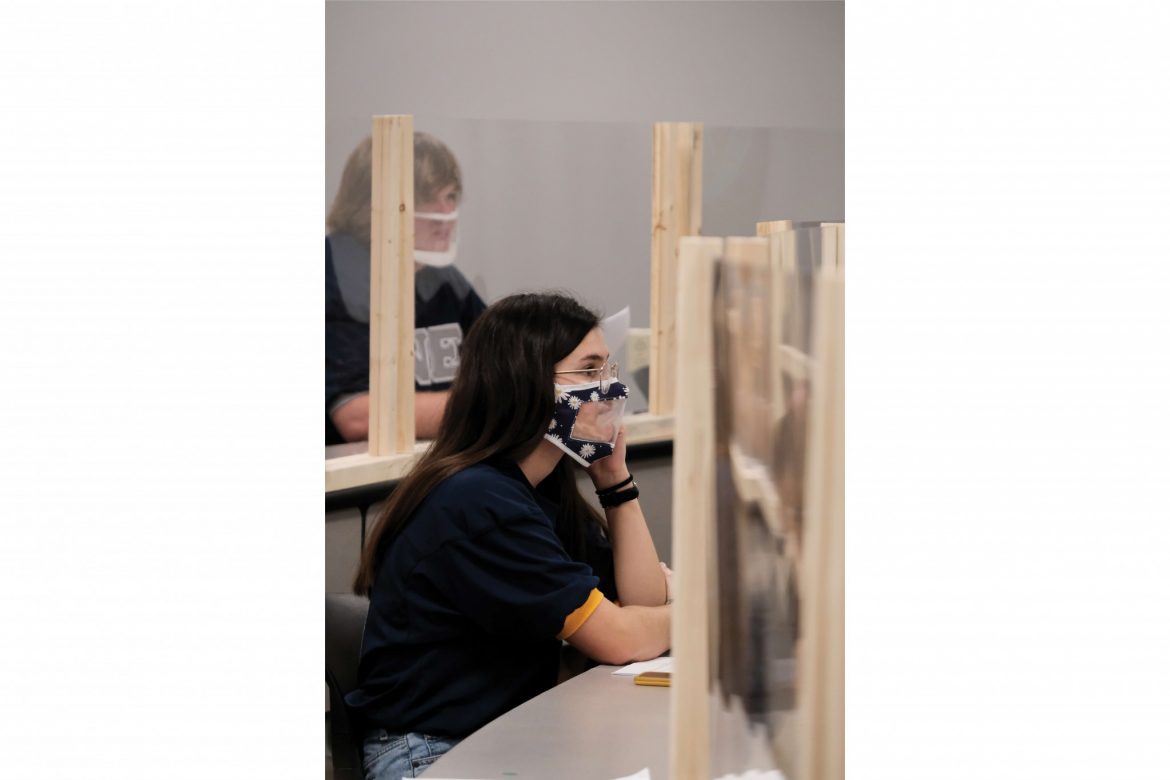COVID-19 brings additional challenges to the classroom for hard of hearing students.
Worldwide health precautions have led nearly everyone to wear a face mask in public. While this is better for public health, it can make staying engaged in the classroom difficult for hard of hearing students.
“You have to speak louder because we are in a COVID-sized classroom now,” Karen Corker, assistant professor of business administration, said. “Especially with the plexiglass, which can give a glare, you have to speak louder. You feel like you are screaming sometimes, but you are really not.”
Harding made the decision to alter the classrooms for the fall semester due to the health crisis. Classes meet in larger classrooms and all desks are topped with a plexiglass shield to prevent unnecessary cross contamination. These necessary precautions, Corker said, make it difficult to effectively communicate for students and teachers.
Haydn and Hunter Corker, seniors at Harding Academy, were born deaf. They rely on their cochlear hearing implants and watching mouth movements to understand the world around them. Harding Academy has taken the same precautions as the University.
“On the high school side, we have microphones that they can use, so a lot of teachers started using those so we can hear through the face mask, and we had some teachers using the face masks with plexiglass, but it started fogging up,” Hunter said.
While a face mask with a clear front seems like an obvious fix, it has proven to cause more problems, according to Haydn.
“The face mask kinda fogs up, and there is a glare,” Corker said. “Once you get past 5 or 6 feet, it gets really hard to see it. So, if you were going to have a hearing-impaired child in a classroom, you would want them in the very front.”
The microphones used in their classrooms are part of a Redcat hearing system. The amplification system makes it easy to hear from all parts of the classroom. In addition to the amplification system, their teachers try to check on them to ensure they understand the instructions correctly. Outside of the classroom, the brothers shared the ways they navigate the masks.
“A lot of times if we are in a big crowd, we have to ask people to repeat things, or lean in closer,” Hunter said.
Since people with hearing disabilities also rely on watching lips, the brothers also recommend speaking clearly when wearing a mask.
“Sometimes people already speak quiet, so it would help if people spoke more clearly,” Haydn said.
Corker said the changes being made by the coronavirus create many obstacles, but it also provides opportunity to better accommodate those with disabilities.
“With the whole [COVID-19] environment, it becomes more critical to identify your hearing-impaired kids,” Corker said. “So identifying those kids, and making sure you have those services, is important.”
Jan Traughber, assistant professor of communication sciences and disorders, shared more ways the University accommodates these issues.
“Faculty and staff are recognizing the potential challenges that individuals face while wearing a mask,” Traughber said. “I know faculty and staff have implemented strategies, such as wearing see-through face masks, providing transcripts of online classes, using closed captioning for materials, and sharing instructional videos.”
